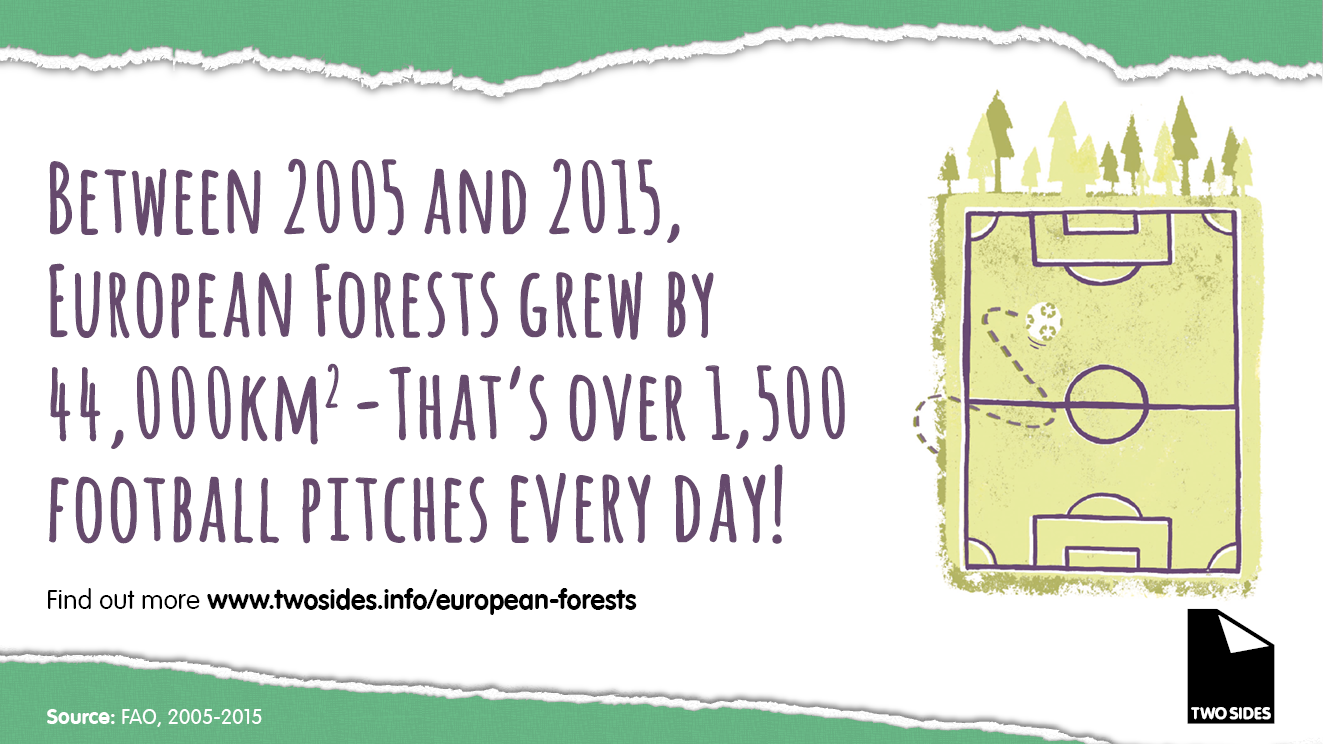Paper is bad for the environment
Paper is based on wood, a natural and renewable material. As young trees grow they absorb CO2 from the atmosphere.
Furthermore, as a wood product, paper also continues to store carbon throughout its lifetime.
The paper industry has a number of respected certification schemes ensuring the paper you use has come from a sustainable forest source. The two most recognisable certifications are the Forest Stewardship Council® (FSC®) and the Programme for the Endorsement of Forest Certification (PEFC™).
European forests are shrinking
European forests have been growing by over 1,500 football pitches every day!
Paper is a uniquely-renewable and sustainable product. The main raw material, trees, are grown and harvested in a carefully controlled and sustainable way – so successfully that European forests, where most of the raw material comes from, have grown by an area the size of Switzerland in just 10 years.
Paper is a wasteful product
Paper is one of the most recycled products in the world
The European paper industry is a leading recycler and, with local collecting systems improving, will increase its recycling rates even further.
The European paper recycling rate is 72%, which is approaching the practical theoretical maximum recycling rate of 78%.1 Some paper products cannot be recovered for recycling because they are kept for long periods of time (books) or archived (records); others are destroyed or contaminated when used (e.g. tissue and hygienic paper).
Planted forests are bad for the environment
Well-managed planted forests reduce the pressure on natural forests and can provide many other environmental benefits
Forests are essential for the transition to the green economy. Well managed planted forests are a vital element in the global forestry mix.
With thanks to Two Sides for the myth busting facts!

